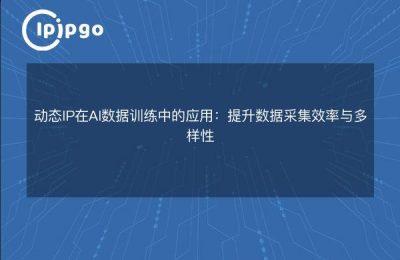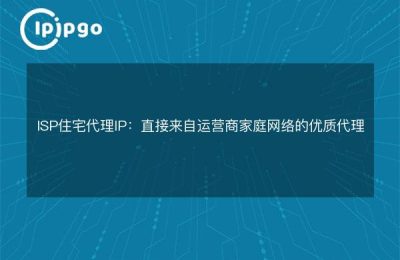
First, why does the front-end also need a proxy ip?
Many people think that the proxy ip is the back-end special, in fact, the front-end to engage in data capture, interface debugging often run into thecross-domain interceptionmaybeIP restrictionThe first thing you need to do is to use a proxy ip to get around the restriction. For example, if you use fetch to request a third-party interface, the browser will directly intercept the request and say "Hey, you're crossing domains", then you can bypass the restriction by using a proxy ip.
To give a real case: small Wang do e-commerce price comparison function, directly request a platform interface is 403 sealed IP. ipipgo rotation IP pool, each request automatically change the vest, the success rate of data acquisition directly pull full.
// Sample base proxy configuration
fetch('https://api.example.com/data', {
headers: {'X-Proxy-Auth': 'ipipgo_123456'}, // ipipgo authentication information
proxy: 'http://dynamic.ipipgo.pro:8080'
})
Second, fetch how to match the agent the most economical?
Browser native fetch does not support direct proxy setting, you have to use these two options:
| programmatic | Applicable Scenarios | ipipgo configuration |
|---|---|---|
| reverse proxy server | When the project is deployed | Configuring Proxy Pools for nginx |
| Local Agent Transit | development and debugging | webpack-dev-server agent |
Focus on configuration tips for development:
// webpack.config.js
devServer: {
proxy: {
'/api': {
target: 'https://target-site.com',
changeOrigin: true,
pathRewrite: {'^/api': ''},
// Key configurations 👇
router: () => `http://${getIP()}:8080`, // ipipgo dynamic ip
onProxyReq: (proxyReq) => {
proxyReq.setHeader('X-Real-IP', generateFakeIP()) //fakeIP
}
}
}
}
Third, the dynamic switching of IP soi operation
Fixed IPs are easily recognized, ipipgo'sSmart Rotation PackageSupports automatic IP change per request. implementation ideas:
let proxyList = await fetch('https://ipipgo.com/api/get_proxies?type=dynamic')
function rotateProxy(){
const { ip, port } = proxyList[Math.floor(Math.random()proxyList.length)]
return `http://${ip}:${port}`
}
// Called before each request
fetch(url, {
proxy: rotateProxy(), {'Authorization': {'ipgo_123
headers: {'Authorization': 'Bearer ipipgo_123456'}
})
Note that to handle 407 proxy authentication errors, it is recommended to use ipipgo'swhitelistingmode, eliminating the password verification step.
IV. Guidelines for demining common pitfalls
1. Cross-protocol issues: https sites can't go http proxy, ipipgo'sSSL Encryption PackageSupport https proxy
2. response time: Setting a reasonable timeout period
// Example of setting a timeout
const controller = new AbortController()
setTimeout(() => controller.abort(), 5000)
fetch(url, {
signal: controller.signal, proxy: ''
proxy: 'http://fast.ipipgo.pro:8888'
})
QA First Aid Kit
Q: The proxy configuration is successful but the request fails?
A: Test proxy connectivity with curl first:
curl -x http://ipipgo.pro:8080 https://example.com
Q: How do I detect which IP is currently being used?
A: Put a checkpoint in the code:
fetch('https://api.ipipgo.com/check_ip').then(res => res.text())
Q: Do free proxies work?
A: Free IP survival time is short, it is recommended to use ipipgo'sEnterprise PackageExclusive IP Pool + Automatic Replacement + Success Rate Guarantee
A final word: choose an agency service by looking at theresponsivenessrespond in singingIP purityThe IP of ipipgo is a direct cooperation of the server room, which is much more reliable than those second-hand resale ones. Encounter technical problems directly to their customer service, the response speed is faster than the technical documents...








